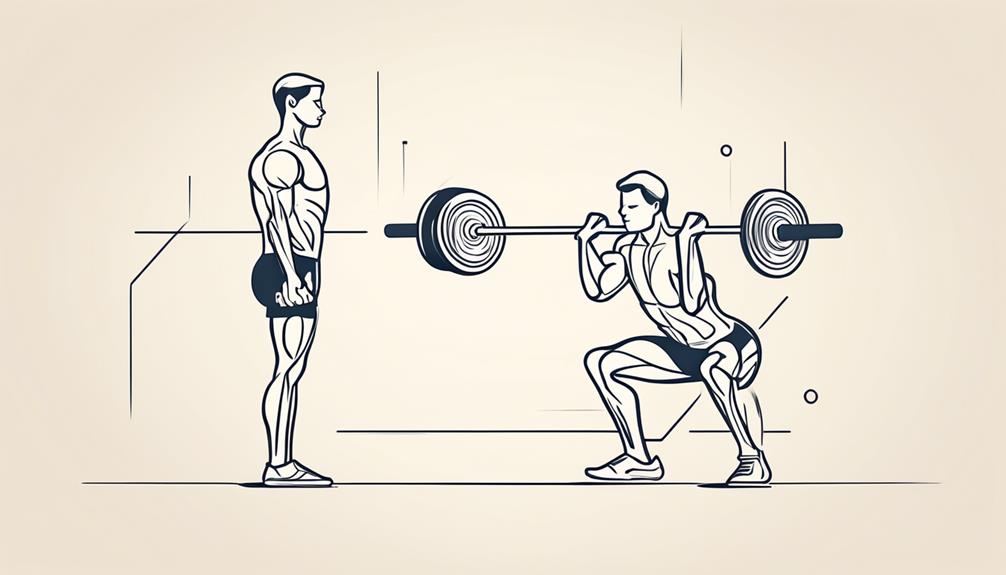6 Natural Pain Relief Methods to Alleviate Discomfort
Looking for natural ways to alleviate discomfort? Several effective methods can help you manage pain without relying solely on medication.
From essential oils to mindfulness meditation, these natural pain relief techniques offer a holistic approach to easing discomfort.
But which methods are most effective for your specific needs? Let’s explore the benefits of each approach to find out how they can provide relief for your pain.
Key Takeaways
- Acupuncture is an effective method for reducing chronic pain and promoting healing.
- Meditation and breathing techniques can help manage pain related to stress or anxiety and improve overall well-being.
- Herbal supplements such as turmeric, ginger, and feverfew can provide natural pain relief but should be used with caution and under the guidance of a healthcare professional.
- Massage therapy, including techniques like Swedish massage and trigger point massage, can reduce muscle tension and promote relaxation for pain relief. Essential oils, such as lavender and rosemary, can also enhance pain management.
Acupuncture
When seeking natural pain relief, consider acupuncture as a complementary technique with proven effectiveness in managing various chronic pain conditions.
Acupuncture’s benefits include its ability to stimulate the release of serotonin, reduce stress levels, and promote healing.
This ancient practice involves the insertion of thin needles into specific points on the body, targeting areas related to pain and discomfort. Various acupuncture techniques exist, including traditional Chinese acupuncture, Japanese acupuncture, and Korean hand acupuncture, each with its unique approach and benefits.
Studies have shown that acupuncture can be effective in managing chronic pain, low back pain, neck pain, osteoarthritis, and headaches. Additionally, acupuncture has been reported to help with knee osteoarthritis, migraines, myofascial pain, fibromyalgia, and temporomandibular joint disorders.
It’s important to seek treatment from a qualified practitioner when considering acupuncture for pain relief to ensure the best possible outcomes.
With its proven track record and minimal side effects, acupuncture is a valuable option to consider for natural pain relief.
Meditation
Meditation is a practice that can help calm the mind, allowing you to focus on your breathing and relax both your body and mind.
Incorporating mindfulness meditation into your daily routine has shown promising results in managing chronic pain and improving overall well-being.
This natural pain relief method offers a non-invasive approach to pain management, complementing traditional pain relief techniques.
Calm the Mind
To achieve a calm and focused mind, incorporating mindfulness meditation into your pain management routine can offer holistic relief from chronic pain and promote overall well-being. Mindfulness meditation, a form of mental relaxation, has shown promising results in improving pain symptoms, depression, and quality of life.
This non-invasive method for pain relief can be particularly helpful for managing pain related to stress or anxiety. It is effective for chronic pain and can be used alone or in combination with other pain relief methods. Meditation can also help in reducing chronic muscle tension and pain, offering a holistic approach to pain management.
Focus on Breathing
By focusing on your breath during meditation, you can promote relaxation and reduce stress levels, which may help alleviate pain. Breathing techniques for pain relief and breathing exercises for stress reduction are integral parts of meditation. Incorporating deep breathing exercises into your meditation practice can aid in managing chronic pain and discomfort.
Mindfulness meditation has shown promising results in improving pain symptoms, depression, and overall quality of life. Meditation can help restore control over the body, reduce chronic muscle tension, and turn down the body’s fight or flight response.
Using meditation as a natural pain relief method may be beneficial for those seeking non-invasive approaches to pain management.
| Breathing Techniques | Benefits |
|---|---|
| Deep Breathing | Promotes relaxation |
| Diaphragmatic Breathing | Reduces stress levels |
| Alternate Nostril Breathing | Aids in managing chronic pain |
| Box Breathing | Restores control over the body |
| 4-7-8 Breathing | Reduces chronic muscle tension |
Relax Body and Mind
Incorporate deep breathing exercises into your meditation practice to promote relaxation and reduce stress levels, aiding in natural pain relief and overall well-being. Utilizing relaxation techniques such as deep breathing and mindfulness practice during meditation can significantly reduce muscle tension, decrease anxiety, and alleviate pain.
Mindfulness meditation, in particular, has gained attention for its effectiveness in managing chronic pain and improving overall quality of life. By focusing on the present moment and cultivating a non-judgmental awareness of your thoughts and emotions, mindfulness practice can help you cope with pain more positively and constructively.
When combined with other natural pain relief methods, such as essential oils and herbal remedies, meditation can enhance the overall effectiveness of pain management while promoting relaxation and a sense of well-being.
Herbal Supplements
Herbal supplements offer natural pain relief and have been found to reduce inflammation, making them a potential alternative for those seeking to manage pain with fewer side effects.
When considering herbal supplements for pain relief, it’s important to be aware of potential side effects and follow dosage guidelines for safe use. Below is a table highlighting some herbal supplements known for their pain-relieving and anti-inflammatory properties:
| Herbal Supplement | Pain-Relieving Properties | Potential Side Effects |
|---|---|---|
| Turmeric | Reduces inflammation | May cause digestive issues |
| Ginger | Natural pain relief | Can interact with blood thinners |
| Feverfew | Traditionally used for pain relief | Possible allergic reactions |
While herbal supplements can offer natural pain relief, they should be used cautiously and under the guidance of a healthcare professional. Some herbal remedies may interact with other medications, and their potential side effects should be taken into consideration. Integrating herbal supplements into a pain management plan may offer an alternative with fewer side effects compared to traditional pain relief medication.
Always consult with a healthcare provider before incorporating herbal supplements into your pain management regimen.
Yoga
Yoga offers a holistic approach to pain relief through physical meditation practices, breath control, and gentle movements, providing potential relief from stress or anxiety-related pain. For beginners, yoga can serve as an excellent starting point for those seeking natural pain relief methods.
Gentle yoga poses for back pain, such as Cat-Cow, Child’s Pose, and Downward-Facing Dog, can help alleviate discomfort and improve flexibility. These poses focus on stretching and strengthening the back muscles, offering relief from common back pain issues.
By incorporating yoga into your pain relief regimen, you can experience the benefits of improved flexibility, reduced stress, and enhanced overall well-being. Additionally, the practice of yoga encourages mindfulness and relaxation, which can be beneficial for managing various types of pain.
Whether you’re dealing with chronic pain or seeking relief from everyday discomfort, yoga provides a non-invasive and effective approach to pain management. Embracing yoga as part of your routine can lead to a healthier, more balanced lifestyle while addressing the physical and mental aspects of pain.
Massage Therapy
Massage therapy, with its ability to reduce muscle tension and promote relaxation, is a valuable method for alleviating pain and discomfort. Different massage techniques offer specific benefits for pain management. Here are some of the benefits of massage and the specific techniques associated with each:
| Massage Technique | Benefits of Massage |
|---|---|
| Swedish Massage | Helps to relax the entire body, improve circulation, and reduce muscle tension. |
| Deep Tissue Massage | Targets deep layers of muscles and connective tissue, beneficial for chronic pain and muscle injuries. |
| Trigger Point Therapy | Focuses on specific areas of tight muscle fibers that can form in your muscles after injuries or overuse, providing relief from chronic pain conditions. |
These techniques can improve circulation, reduce inflammation, and manage stress and anxiety, contributing to overall pain relief. Regular massage therapy sessions can be used as a complementary approach alongside other natural pain relief methods for enhanced effectiveness. Whether you’re seeking relief from a specific condition or simply want to relax and de-stress, massage therapy offers a holistic approach to managing pain and discomfort.
Essential Oils
You’ll find that essential oils offer a range of benefits for natural pain relief.
From reducing inflammation to soothing discomfort, these oils can be a valuable addition to your pain management toolkit.
Understanding the best essential oils and application methods can help you harness their full potential for pain relief.
Aromatherapy Benefits
Aromatherapy benefits from essential oils, such as lavender, rosemary, peppermint, and eucalyptus, which offer natural pain relief with their anti-inflammatory and pain-relieving effects.
Aromatherapy research suggests that inhaling the aroma of these essential oils can positively impact the perception of pain and discomfort.
It’s important to note that essential oils should be used with caution and by essential oil safety guidelines. When using essential oils for pain relief, always dilute them properly and perform a patch test to check for any potential skin irritation.
Additionally, certain essential oils may not be suitable for individuals with specific health conditions or during pregnancy, so it’s advisable to consult a healthcare professional before using them.
Incorporating aromatherapy with essential oils into your pain management routine can complement other natural pain relief methods and contribute to overall well-being.
Top Essential Oils
Essential oils, such as lavender, rosemary, peppermint, and eucalyptus, are renowned for their natural pain relief properties, making them valuable additions to a holistic approach to managing discomfort.
Lavender essential oil offers pain-relieving, anti-inflammatory, and antioxidant effects, which can be beneficial for alleviating various types of pain. It’s particularly effective for headaches, migraines, and muscle tension.
On the other hand, rosemary essential oil is known for its potential to relieve muscle pain. It may also help with bone pain and headaches.
When using essential oils for pain relief, it’s important to dilute them properly and consider individual sensitivities. Always perform a patch test before using any essential oil topically and consult with a healthcare professional, especially if you have any underlying health conditions or are pregnant.
Application Methods
When applying essential oils for pain relief, it’s important to consider proper dilution and suitable application methods to ensure safe and effective use. Essential oils such as lavender, rosemary, peppermint, and eucalyptus can be applied topically to alleviate pain and inflammation.
To use these oils, consider diluting them with a carrier oil and applying them to the affected area. Alternatively, you can use a diffuser for inhalation therapy.
Topical application of essential oils provides localized pain relief, offering a convenient and natural option for managing discomfort. For instance, lavender and peppermint oils can be blended with carrier oils and massaged onto the skin to help alleviate pain and reduce inflammation.
Always perform a patch test and follow recommended dilution ratios to ensure safety and effectiveness when applying essential oils as alternative remedies for natural pain relief.
Frequently Asked Questions
What Are Natural Ways to Reduce Pain?
You can reduce pain naturally through acupuncture therapy, herbal remedies, and other alternative treatments. These methods have been shown to effectively manage chronic pain and improve quality of life without relying on pharmaceuticals.
How Can I Relieve Pain and Discomfort?
You can relieve pain and discomfort by incorporating mind-body techniques and herbal remedies. Mindfulness meditation and herbal remedies like turmeric and ginger have been shown to alleviate pain and inflammation, providing natural relief for your discomfort.
What Are Three Approaches to Alleviate Pain and Minimise Discomfort?
To alleviate pain and minimize discomfort, try incorporating mind-body techniques like mindfulness meditation, herbal remedies such as turmeric and ginger, and alternative therapies like acupuncture. These approaches can offer natural relief and promote overall well-being.
What Is the Most Natural Painkiller?
The most natural painkiller often depends on personal preference and the type of pain. Herbal remedies, alternative therapies, and holistic approaches, including traditional remedies like acupuncture and meditation, can provide effective relief without the use of pharmaceuticals.
Conclusion
In conclusion, incorporating natural pain relief methods into your daily routine can help alleviate discomfort without relying solely on medication.
Acupuncture, meditation, herbal supplements, yoga, massage therapy, and essential oils are all effective ways to manage pain naturally.
By exploring these alternative therapies and maintaining a healthy lifestyle, you can find relief from chronic pain and improve your overall well-being.







